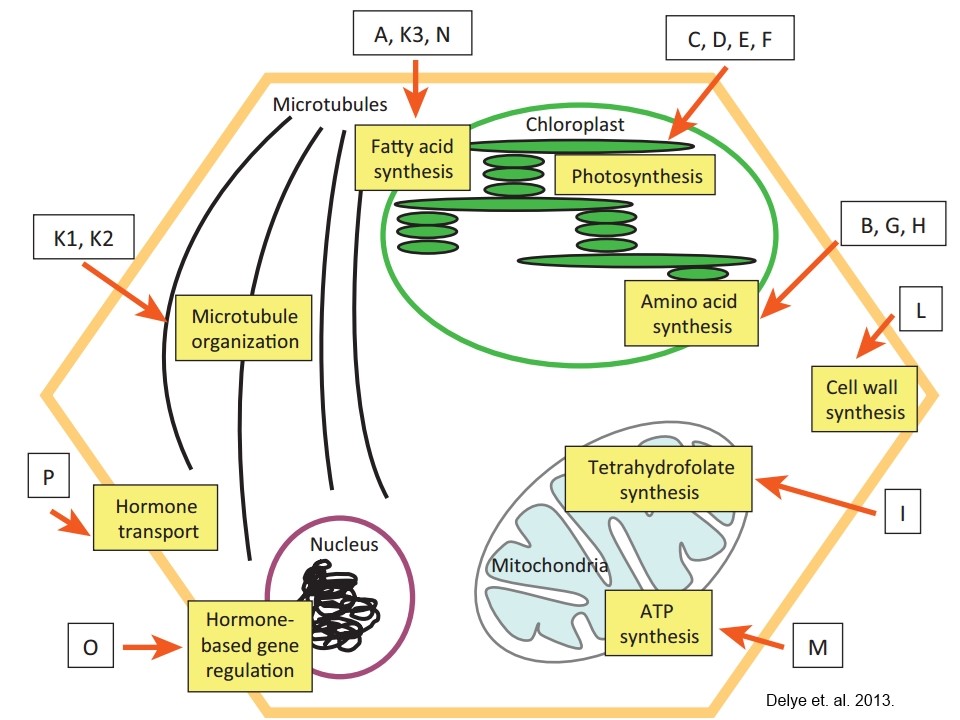Chapter 12: Herbicide Discovery and Classification
12.9 Classifying Herbicides: Family and Site of Absorption
Herbicide Family (also referred to as Chemical Family) can be considered a group of herbicides that is named in relation to its chemical similarities. For example, halosulfuron, metsulfuron, and prosulfuron are all herbicide active ingredients that are members of the Sulfonylurea family. Members of the same herbicide family will have the same mode of action and typically the same site of action. For example sulfonylureas have acetolactate synthethase (ALS) as the site of absorption and the mode of action is amino acid synthesis inhibition.
Site of Absorption is the location where the herbicide is taken up by the plant. This should not be confused with Site of Action which is the biochemical pathway within the plant where the herbicide acts. In some references, the site of absorption may be referred to as the site of uptake. There are three possibilities for the site of absorption; root, shoot, and foliar. Root absorption occurs, as the name implies, through the roots of the plants. Shoot absorption refers to uptake by the shoots as it passes through the soil on the way to emergence. Many pre-emergence herbicides will have root absorption, shoot absorption, or both as their site of uptake. Foliar absorption is through emerged leaves. Foliar absorption herbicides must be applied so that the herbicide is directed to the plant leaves rather than to the soil. If an herbicide has more than one site of absorption listed then typically the sites will be listed in primary order of absorption. For example, an herbicide may be listed as S/R which means that its primary order is shoot absorption and the secondary order is root absorption.
It should also be noted that herbicides within the same chemical families may have different sites of absorption. Do not assume that since a particular herbicide is in a family that it will have the same site of absorption as other members of the family.
This diagram below illustrates the relationship between Mode of Action and Site of Action. The yellow outline represents the plant cell wall, with some key organelles drawn in the middle. In the labeled boxes, such as “photosynthesis”, are the different modes of actions. In the boxes with letters, such as “C, D, E, F” are the sites of actions as designated by the HRAC grouping system (ie how the herbicides actually interfere with photosynthesis).
